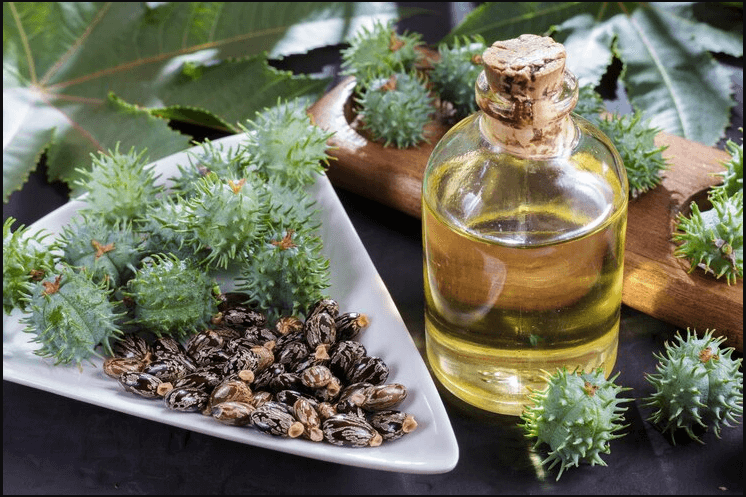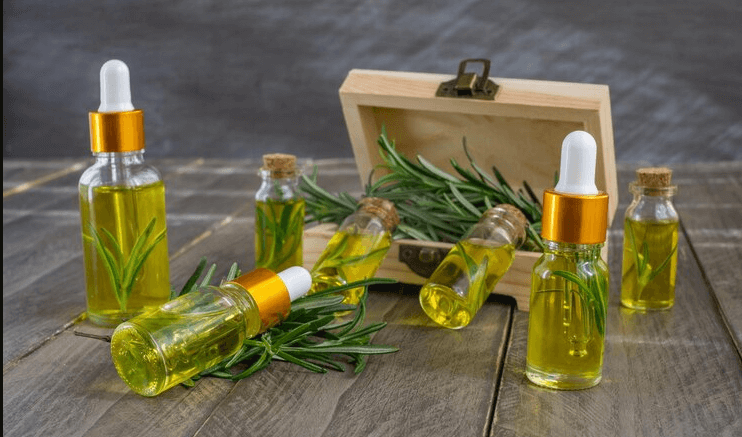Dry skin can be more than just a seasonal annoyance—it can leave your skin feeling tight, rough, itchy, and visibly dull. If you’ve tried countless moisturizers and still struggle with flakiness or irritation, you’re not alone. Millions deal with dry skin year-round, especially in colder climates or harsh indoor heating conditions.
That’s why many are turning to nature for relief—and castor oil is quickly becoming a favorite among natural skincare enthusiasts. Rich in ricinoleic acid, vitamin E, and essential fatty acids, castor oil is known for its deep moisturizing and skin-repairing properties. But is castor oil really good for dry skin, or is it just another overhyped DIY trend?
In this article, we’ll explore everything you need to know about using castor oil for dry skin. You’ll learn about its scientifically backed benefits, how to use it safely, expert tips for maximizing hydration, and how it stacks up against other popular oils like coconut or jojoba. If you’re ready to upgrade your dry skin care routine naturally—keep reading.
What is Castor Oil?

Castor oil is a thick, nutrient-rich oil derived from the seeds of the castor plant (Ricinus communis). Native to tropical regions of Africa and Asia, this oil has been a staple in natural remedies and beauty routines for centuries. But what makes it so special, especially when it comes to skincare?
One of castor oil’s standout features is its unique composition. It’s packed with ricinoleic acid, a rare fatty acid that gives it powerful moisturizing and anti-inflammatory properties. This makes it a popular choice for addressing a variety of skin concerns, including dryness. Its texture might feel heavier than other oils, but that’s what allows it to lock in moisture and nourish deeply.
As a natural moisturizer, castor oil works wonders in creating a protective barrier on the skin, preventing water loss and keeping it hydrated for longer periods. Plus, its “rich in fatty acids” profile helps soothe irritation and promotes a smooth, healthy complexion.
Whether you’re battling flaky patches or looking for a hydrating oil to level up your skincare game, castor oil for skincare has gained recognition as an affordable and effective solution. Its versatility extends beyond just dry skin, making it a go-to for anyone seeking a simple yet powerful skin treatment.
Is Castor Oil Good for Dry Skin?
Yes—castor oil is widely regarded as an effective natural remedy for dry skin, thanks to both its composition and functional properties. Let’s break down why it works.
Scientific & Anecdotal Evidence
Numerous skincare enthusiasts and holistic practitioners swear by castor oil for its deep moisturizing effects. While clinical studies on castor oil specifically for dry skin are limited, research confirms that its primary component, ricinoleic acid, offers anti-inflammatory and emollient properties that help soothe and soften the skin. In addition, dermatologists often recommend oils rich in fatty acids for repairing a compromised skin barrier—which castor oil delivers in abundance.
A Natural Humectant
Castor oil functions as a humectant, meaning it draws moisture from the air into the skin. This helps increase skin hydration and retain moisture throughout the day, making it ideal for dry, flaky, or weather-exposed skin.
Rich in Fatty Acids & Skin-Loving Nutrients
Castor oil contains:
- Ricinoleic acid – anti-inflammatory and moisturizing
- Omega-9 fatty acids – helps repair the skin’s protective barrier
- Vitamin E – known to nourish and restore damaged skin
What Experts Say
While not all dermatologists recommend castor oil for every skin type, many acknowledge its hydrating potential. According to board-certified dermatologists, castor oil is safe for most people with dry or normal skin types, especially when used in moderation or blended with other carrier oils to reduce thickness.
Top Benefits of Using Castor Oil for Dry Skin
When it comes to treating dry, irritated skin, castor oil delivers a powerful range of benefits that go beyond basic hydration. From locking in moisture to soothing inflamed areas, here’s how this thick, nutrient-rich oil can transform your dry skin care routine:
1. Intense Hydration & Moisture Retention
Castor oil acts as a natural humectant, meaning it draws moisture from the environment and helps your skin retain it. Its thick consistency forms a protective barrier that seals in hydration, making it ideal for dry, dehydrated skin types.
2. Anti-Inflammatory and Soothing Effects
Rich in ricinoleic acid, castor oil has natural anti-inflammatory properties that calm redness, irritation, and flakiness. This makes it especially helpful for those with sensitive skin or dryness caused by harsh weather or over-cleansing.
3. Heals Cracked or Flaky Skin
Whether you’re dealing with dry patches on your cheeks or cracked hands and feet, castor oil helps soften and heal broken skin. Its fatty acid content promotes regeneration and encourages smoother, healthier skin texture over time.
4. Softens Rough Areas
Castor oil is perfect for rough, dry zones like elbows, knees, and heels. With consistent use, it helps restore softness and elasticity, making skin look and feel supple.
5. Fights Bacteria & Supports Skin Repair
Thanks to its mild antimicrobial properties, castor oil not only hydrates but also protects the skin from bacterial buildup that can worsen dryness or lead to irritation. It aids in cell repair, promoting overall skin health and resilience.
How to Use Castor Oil for Dry Skin
Incorporating castor oil into your skincare routine is simple and effective. With its deeply moisturizing properties, this natural remedy can transform your dry skin when used the right way. Here’s how you can get started:
- Cleanse First
Before applying castor oil, make sure your skin is clean and slightly damp. This helps the oil absorb better and locks in hydration. Use a gentle cleanser and pat your skin dry with a towel—no harsh scrubbing! - Use It as a Moisturizer
For a straightforward castor oil skincare routine, warm a few drops of the oil between your palms and gently massage it into your skin. Its thick consistency means a little goes a long way. Focus on areas prone to dryness, like your elbows, knees, or face. - DIY Castor Oil Treatment
Looking for a deeper treatment? Create a nourishing mask by mixing castor oil with another lightweight oil, like coconut or jojoba oil, for easier application. Apply a thin layer, let it sit for 15–20 minutes, then rinse with warm water and a soft cloth. - Spot Treatment for Problem Areas
If you have particularly dry or flaky patches, dab a small amount of castor oil directly onto those areas before bed. Let it work overnight, and wake up to softer skin.
Consistency is key when using castor oil for skincare. Whether you apply it daily or use it as a weekly treatment, this DIY-friendly solution can help restore your skin’s natural moisture and leave it feeling hydrated and smooth.
Precautions and Side Effects of Castor Oil
While castor oil is a fantastic natural remedy for dry skin, it’s essential to use it carefully to avoid unwanted reactions. Although rare, castor oil side effects can occur, especially if you have sensitive skin or allergies. Here’s what you need to know before adding it to your routine.
- Patch Test First
Before applying castor oil to larger areas, do a patch test. Apply a small amount to the inside of your wrist or elbow and wait 24 hours to check for allergic reactions, such as redness, itching, or irritation. - Avoid Overuse
Castor oil’s thick texture can sometimes clog pores, especially if you’re prone to acne or have oily skin. Use it sparingly and avoid applying too much, particularly on your face. - Dilute When Necessary
If pure castor oil feels too heavy or causes discomfort, consider mixing it with a lighter carrier oil like almond or argan oil. This reduces the risk of irritation and makes it easier to spread. - Be Cautious Around Eyes
While castor oil is often used for eyelashes and brows, avoid getting it directly into your eyes, as it may cause irritation or discomfort. - Consult a Dermatologist
If you have a history of skin conditions or are unsure about castor oil precautions, consult a dermatologist before using it.
By taking these simple precautions, you can enjoy the benefits of castor oil for dry skin while minimizing potential risks. Always listen to your skin—it’ll let you know what works best!
Alternative Natural Oils for Dry Skin

If castor oil isn’t your top choice, don’t worry—there are plenty of other natural oils that work wonders for dry skin. These alternatives are lightweight, nourishing, and perfect for restoring moisture without the heaviness of castor oil. Let’s explore some of the best oils for dry skin.
- Coconut Oil
A popular alternative to castor oil, coconut oil is rich in fatty acids like lauric acid, which deeply moisturize and create a protective barrier. It’s lightweight, easy to apply, and ideal for dry, flaky patches. - Jojoba Oil
Jojoba oil is a favorite in the skincare world for its ability to mimic your skin’s natural oils. It’s non-greasy, absorbs quickly, and helps balance moisture levels, making it a great option for those with sensitive or acne-prone skin. - Argan Oil
Known as “liquid gold,” argan oil is packed with vitamin E and essential fatty acids. This luxurious oil hydrates deeply while promoting a smooth, glowing complexion. It’s particularly beneficial for dry skin on the face. - Sweet Almond Oil
If you’re looking for something gentle, sweet almond oil is a fantastic choice. Its light texture and high vitamin E content make it perfect for soothing and softening dry, irritated skin.
These natural oils offer effective alternatives to castor oil, giving you plenty of options to tailor your skincare routine. Whether you prefer coconut oil’s richness or jojoba oil’s versatility, you’re sure to find the perfect match for your skin!
Conclusion
So, is castor oil good for dry skin? Absolutely! With its rich fatty acids, emollient properties, and ability to lock in moisture, castor oil is a natural powerhouse for soothing and hydrating dry skin. Whether you use it as a daily moisturizer, a deep treatment, or a spot remedy, this versatile oil can help restore your skin’s natural softness and glow.
Of course, it’s important to use it properly—test for sensitivity, apply sparingly, and blend with other oils if needed. If castor oil doesn’t suit your needs, there are plenty of other natural oils like coconut, jojoba, and argan oil that can deliver equally amazing results.
Ready to see the difference castor oil can make? Give it a try and let your skin do the talking! Have you used castor oil before? Share your experience and tips in the comments—we’d love to hear from you!


